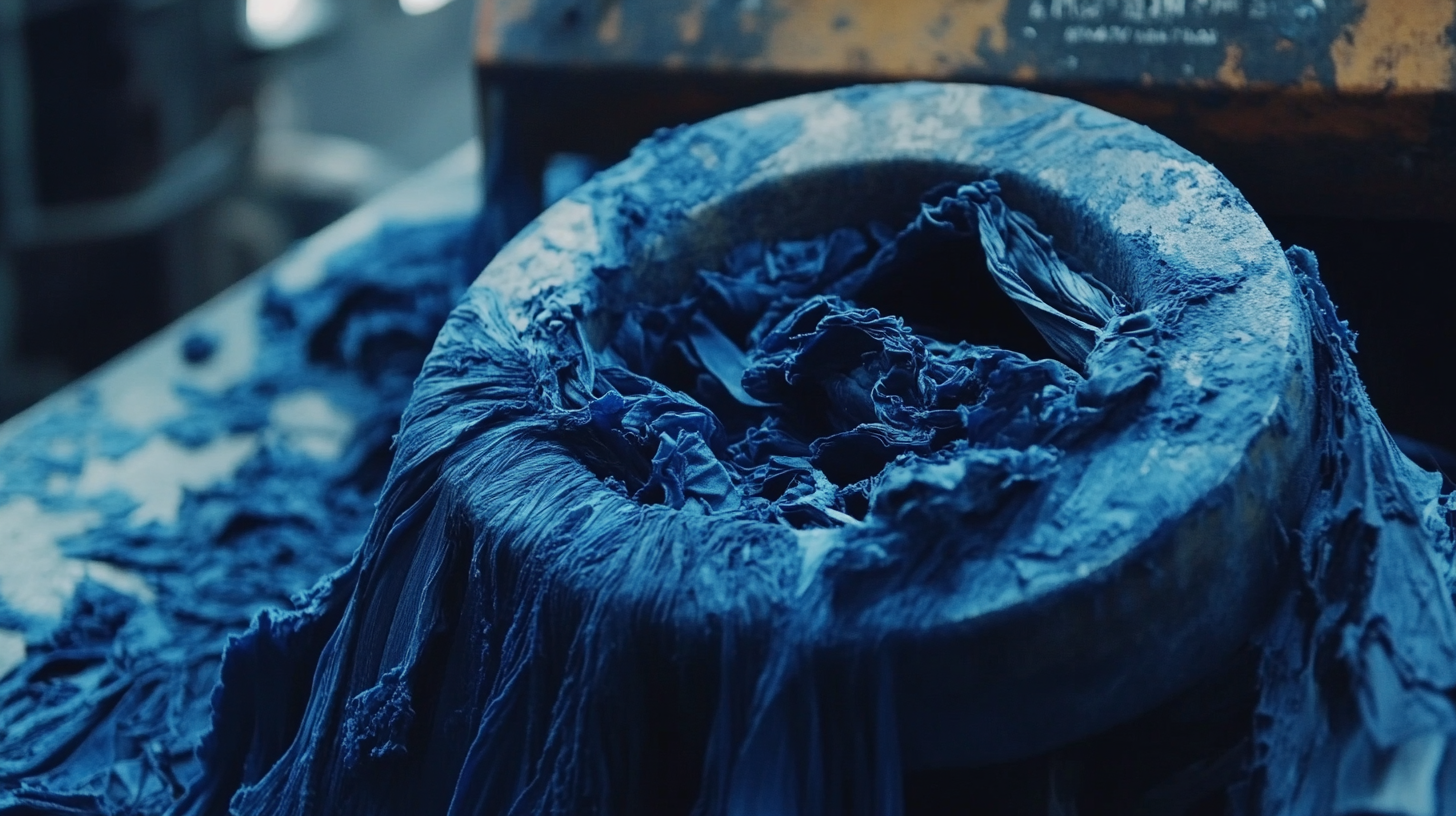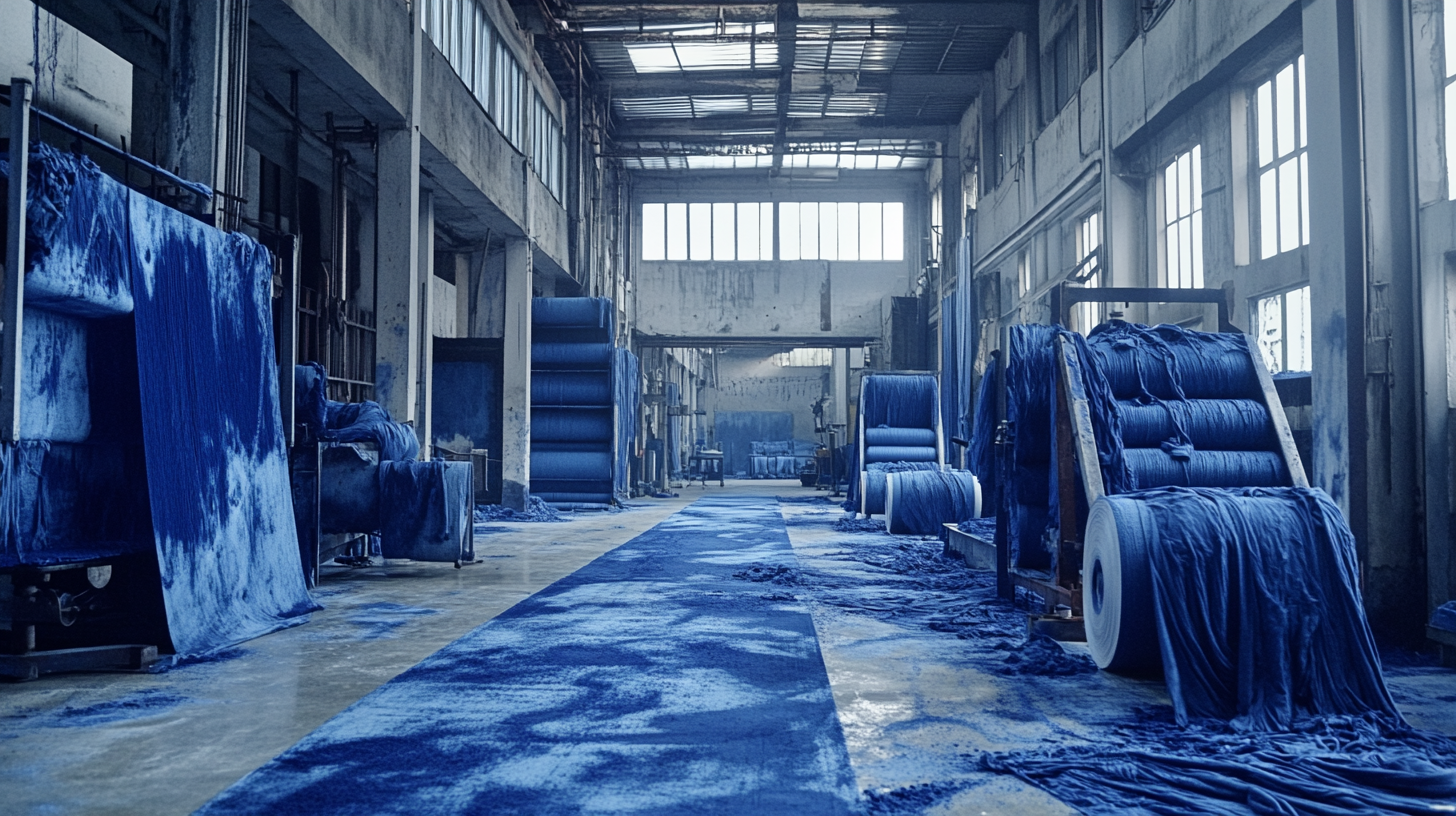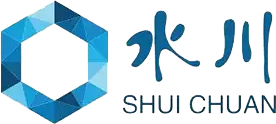As the global trade landscape continues to evolve, the demand for unique and sustainable products has surged, particularly in the textile industry. The recent 137th Canton Fair, held in Guangzhou, showcased this trend, highlighting the growing significance of indigo dye as a staple in modern fashion and fabric design. With over 288,938 overseas buyers attending, a 17.3% increase from the previous fair, it is evident that indigo dye is not merely a historical color choice but a vibrant component of contemporary global trade. Reports indicate that the textile dye market, which includes indigo dye, is projected to witness significant growth, driven by sustainability concerns and consumer preferences for natural dyes. This trend aligns with a broader shift towards eco-friendly manufacturing practices, making indigo dye a key player in the industry. As we delve deeper into the implications of this resurgence at the Canton Fair, the intersection of tradition and innovation in indigo dye usage presents both challenges and opportunities for manufacturers and consumers alike.

Indigo dye, a color deeply rooted in history, has surged in significance within global trade, particularly highlighted at the recent 137th Canton Fair. This rich blue hue, derived from the indigo plant, not only embodies cultural heritage but also signifies a shift in consumer preferences toward sustainable and artisanal products. As more brands and manufacturers seek to source eco-friendly materials, indigo dye has emerged as a prominent choice, appealing to environmentally conscious consumers and fostering a renewed appreciation for traditional dyeing techniques.
At the Canton Fair, the prominence of indigo dye showcases its versatility across industries ranging from fashion to home textiles. Exhibitors presented a diverse array of indigo-dyed products, illustrating how this age-old dye can be innovatively integrated into modern designs. Furthermore, the collaborative efforts between artisans and global brands underline the importance of ethical sourcing and fair trade practices. This trend not only enhances the value of indigo-dyed goods but also invites a broader conversation about the interconnectedness of culture, commerce, and sustainability in today's global marketplace.

The 137th Canton Fair has set the stage for an impressive display of international trade, attracting a record number of buyers from across the globe. This year's fair, renowned for its diverse offerings and vibrant atmosphere, has become a focal point for global businesses seeking to connect and collaborate. The influx of international buyers underscores the fair's significance as a pivotal hub for exploring new markets and sourcing unique products.
Among the standout attractions at this year's event is the resurgence of indigo dye, a traditional color making waves in contemporary fashion and textiles. International buyers are keen to tap into the rich heritage and innovative applications of indigo, showcasing a growing interest in sustainable and cultural products. The fair not only highlights the beauty and versatility of indigo but also emphasizes the broader trend of ethical sourcing, as buyers increasingly prioritize environmental considerations in their purchasing decisions. As global trade evolves, events like the Canton Fair play a crucial role in fostering connections and driving trends in the marketplace.
This pie chart represents the distribution of international buyers attending the 137th Canton Fair, highlighting the significant interest in sustainable products such as indigo dye.
At the 137th Canton Fair, the spotlight on global trade illuminated the economic landscape shaped by ongoing challenges and opportunities. This premier event not only showcases designs and innovations, especially in sectors like indigo dye, but also serves as a barometer for export growth amidst a backdrop of tightening global trade relations. With rising tariffs impacting numerous sectors, including textiles, manufacturers are increasingly concerned about navigating these new realities. Many exhibitors expressed hesitance to pivot to local markets, despite government encouragement, highlighting the tension between foreign demand and domestic pressure.
The significance of the Canton Fair extends beyond immediate trade implications; it offers insights into China's broader economic strategies. As the government aims for a growth target of around 5% for 2024, initiatives like the expanded consumer trade-in scheme underscore a push to enhance household spending. These measures are crucial in light of external pressures such as tariffs, which have reverberated through supply chains and affected manufacturers' bottom lines. The Canton Fair therefore stands as a critical platform for assessing the resilience of China's export sector, while also reflecting the need for innovative adaptation in the evolving global market.
This bar chart illustrates the growth of indigo dye exports from 2018 to 2022, highlighting an increasing trend in export values, particularly significant growth observed in 2021 and 2022, which could be linked to enhanced global trade opportunities presented at the Canton Fair.
In recent years, online platforms have played a pivotal role in sustaining trade beyond traditional marketplaces like the Canton Fair. As global businesses seek new ways to connect and thrive, the convenience and accessibility offered by these digital channels have transformed how trade operates. Manufacturers and buyers can now engage with each other in real-time, facilitating smoother transactions and broader outreach.
The rise of indigo dye has further emphasized the importance of these online tools. As this vibrant color gains popularity across fashion and home décor industries, businesses leveraging e-commerce can quickly adapt to trends and consumer demands. By utilizing social media and dedicated marketplaces, sellers of indigo products can showcase their offerings to a global audience, thus expanding their customer base far beyond local limits established during the Canton Fair.
Moreover, online platforms allow for enhanced storytelling around products like indigo dye, highlighting its cultural heritage and sustainable production methods. This narrative, combined with the ability to transact seamlessly online, strengthens connections between consumers and artisans, ensuring that the trade ecosystem remains vibrant and resilient long after the fair concludes.
As the 138th Canton Fair approaches, anticipation among global traders and businesses continues to build. This biannual event, renowned for being the largest trade fair in China, offers an unparalleled opportunity for exhibitors and buyers to connect, explore new ventures, and discover innovative products. With a focus on cutting-edge technologies and sustainable practices, the upcoming fair is expected to feature a diverse range of industries, showcasing everything from textiles to electronics.
One exciting highlight of the 138th Canton Fair is the growing prominence of indigo dye products, reflecting a broader trend towards sustainable fashion and artisanal craftsmanship. As consumers increasingly prioritize environmentally friendly practices, the demand for natural dyes, particularly indigo, is on the rise. The fair will serve as a platform for manufacturers and designers to showcase their latest creations, promoting an appreciation for traditional techniques while also catering to modern aesthetics. Attendees can expect to see various applications of indigo dye, from clothing to home décor, merging cultural heritage with contemporary design in a vibrant marketplace.

